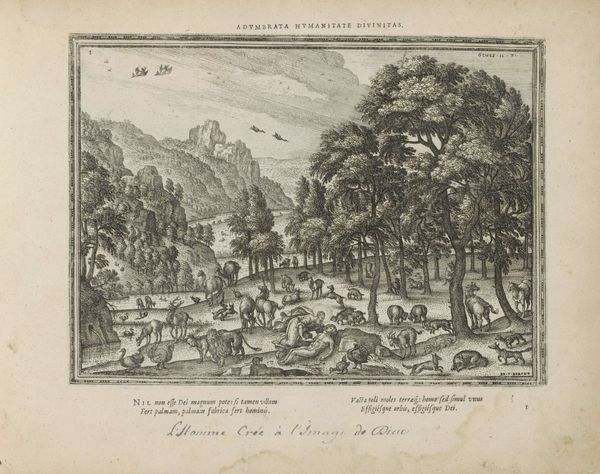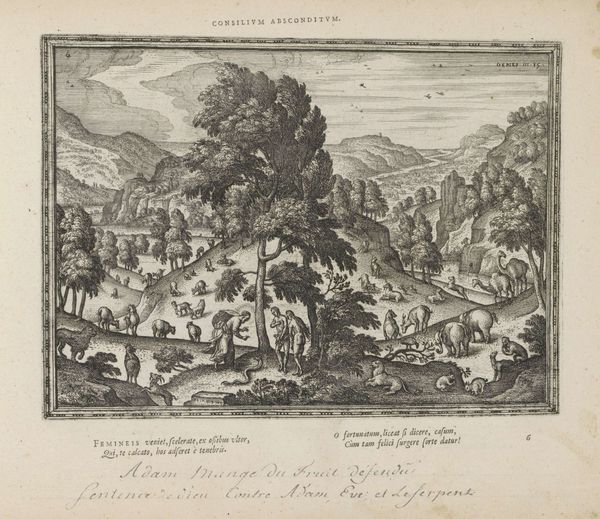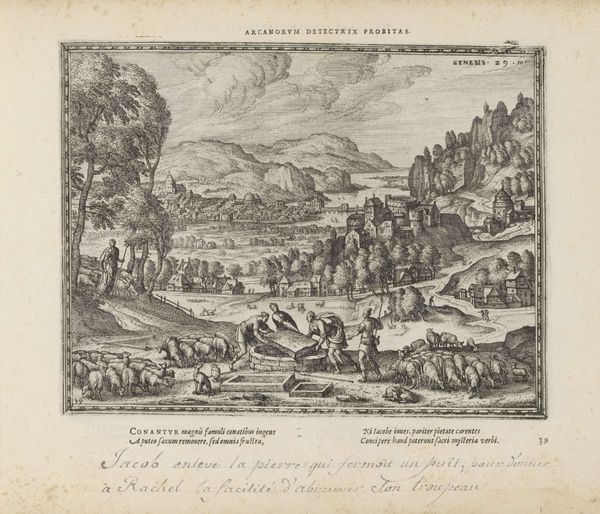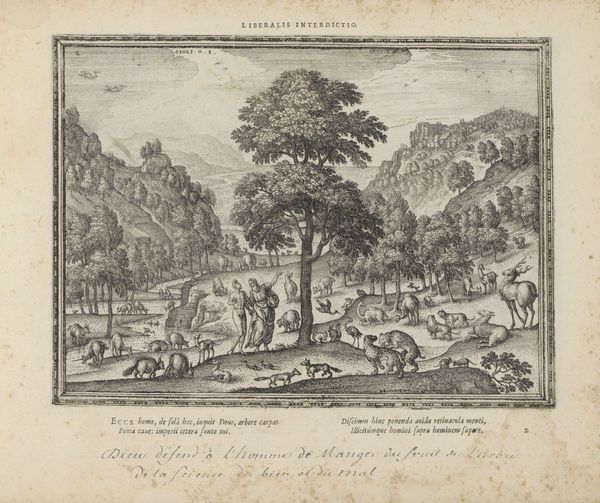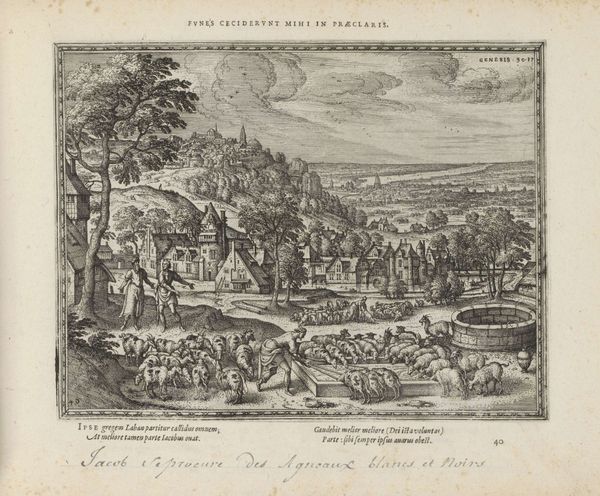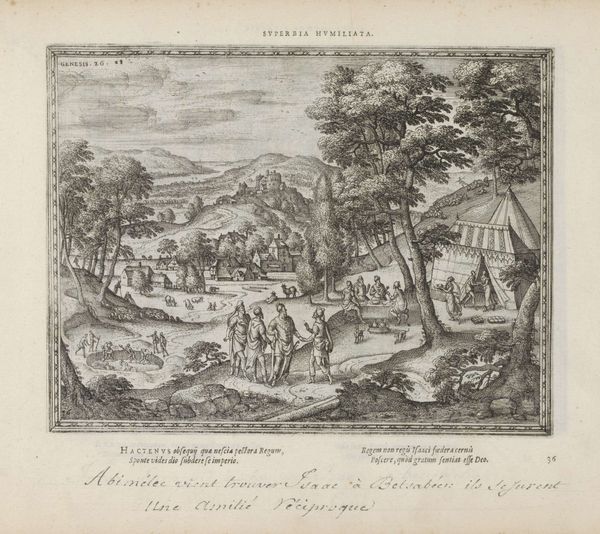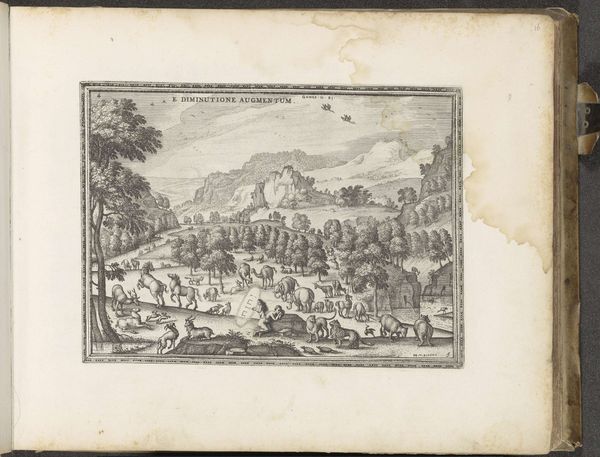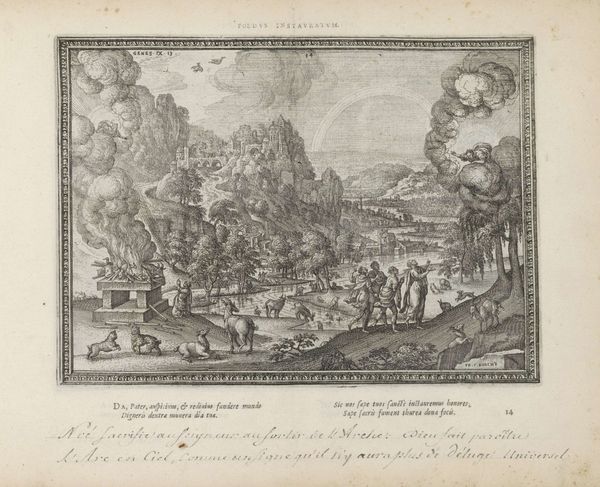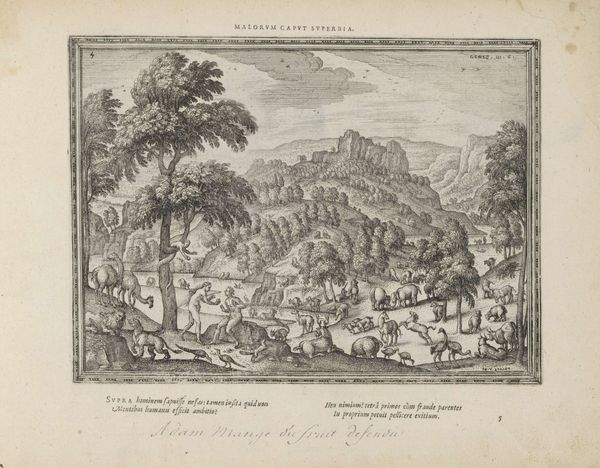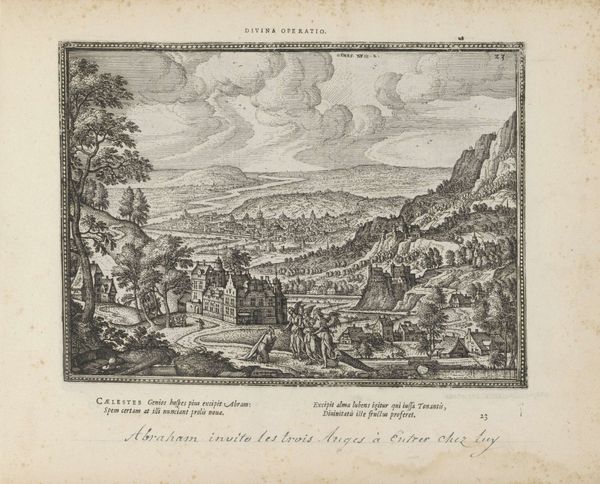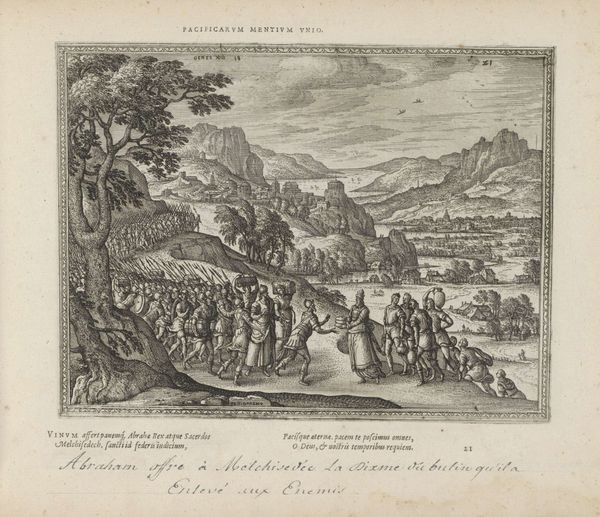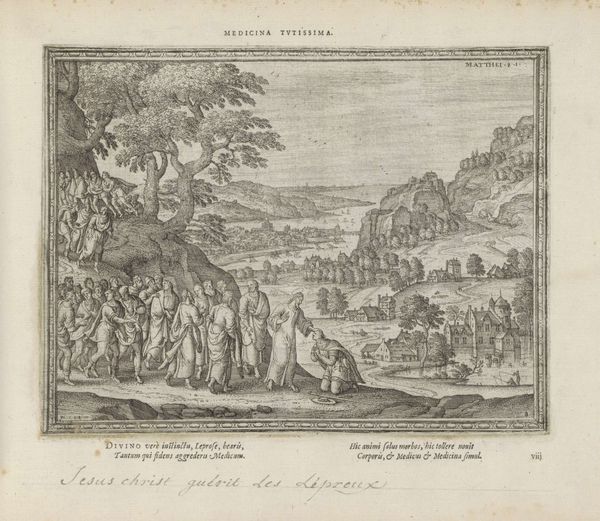
print, engraving
# print
#
landscape
#
figuration
#
line
#
history-painting
#
northern-renaissance
#
engraving
Dimensions: height 189 mm, width 258 mm
Copyright: Rijks Museum: Open Domain
Editor: Here we have "The Creation of Eve," an engraving by Pieter van der Borcht the Elder, created sometime between 1582 and 1613. It feels almost like a landscape painting teeming with animals, but at the center, almost hidden, is Eve emerging from Adam. What social and cultural lenses could we use to view this work? Curator: Considering this engraving, I'm immediately struck by its function as a piece of religious instruction and its role in shaping perceptions of gender roles. How does the placement of Eve within this almost overwhelming natural scene affect our understanding of her agency, or lack thereof? Editor: I see what you mean. She’s literally born from the landscape itself, dominated by Adam and this almost Edenic garden. Is it suggesting women are subordinate to the natural world, and by extension, to men who control it? Curator: Exactly! Remember, art in this period was often deeply embedded in social and political structures. The print media helped circulate ideologies. What statements might it make about female agency and societal expectations of women, through imagery readily disseminated and consumed by the public? Editor: So, it’s not just a pretty picture, it’s also conveying power dynamics. But I’m wondering, is it possible to read into the abundance of nature something positive? Like, women representing fertility and abundance? Curator: That’s a fantastic question. It raises the complex tension inherent in representations of women at the time. Images are rarely one-dimensional. Perhaps the sheer number of animals hints at a societal hope or at least desire for reproduction, further defining a woman's worth via procreation and family creation. The line style itself may have lent towards its reception - was its accessibility an inviting draw for families to consume its underlying messages? Editor: That makes a lot of sense! It really gives me a new way to consider these kinds of historical pieces, as reflecting not only beauty but the social context in which they were made and viewed.
Comments
No comments
Be the first to comment and join the conversation on the ultimate creative platform.
